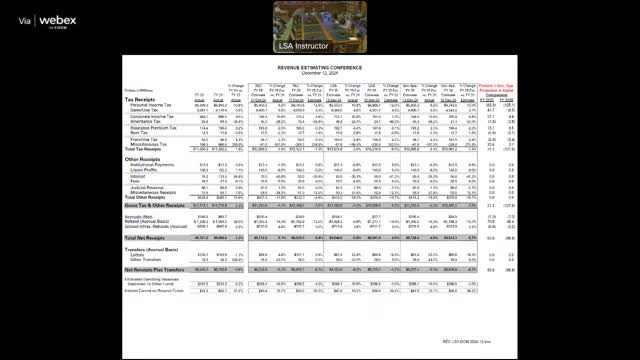Federal Reserve cuts interest rates as US inflation moderates and consumer spending surges
January 01, 2025 | Revenue Estimating Conference, Legislative, Iowa
This article was created by AI summarizing key points discussed. AI makes mistakes, so for full details and context, please refer to the video of the full meeting. Please report any errors so we can fix them. Report an error »

The recent Revenue Estimating Conference highlighted positive trends in Iowa's economy, reflecting broader national improvements. As inflation moderates and the Federal Reserve reduces interest rates, sectors such as durable goods manufacturing, housing, and new vehicle sales are expected to benefit significantly.
Consumer price gains have stabilized at 2.7% annually, a notable decrease from last year's peak of 9.1%. Gas prices have also dropped, with the national average now at $3.05, down from $3.25 a year ago. This decline in costs, coupled with a 3.7% increase in consumer spending, suggests a robust economic environment heading into the holiday season. Retail sales in October rose by 2.8%, indicating strong consumer confidence.
In Iowa, the unemployment rate stands at a low 3%, with a labor force participation rate of 66.2%. The state has seen non-farm employment peak at 1.6 million jobs, demonstrating resilience despite rising costs. Housing permits are returning to pre-pandemic levels, and leading economic indicators have shown positive growth in recent months.
Overall, the discussions at the conference reflect a cautiously optimistic outlook for Iowa's economy, with ongoing job availability and high personal income levels contributing to a stable economic landscape for residents. As the state navigates these changes, the focus remains on sustaining growth and addressing community needs.
Consumer price gains have stabilized at 2.7% annually, a notable decrease from last year's peak of 9.1%. Gas prices have also dropped, with the national average now at $3.05, down from $3.25 a year ago. This decline in costs, coupled with a 3.7% increase in consumer spending, suggests a robust economic environment heading into the holiday season. Retail sales in October rose by 2.8%, indicating strong consumer confidence.
In Iowa, the unemployment rate stands at a low 3%, with a labor force participation rate of 66.2%. The state has seen non-farm employment peak at 1.6 million jobs, demonstrating resilience despite rising costs. Housing permits are returning to pre-pandemic levels, and leading economic indicators have shown positive growth in recent months.
Overall, the discussions at the conference reflect a cautiously optimistic outlook for Iowa's economy, with ongoing job availability and high personal income levels contributing to a stable economic landscape for residents. As the state navigates these changes, the focus remains on sustaining growth and addressing community needs.
View full meeting
This article is based on a recent meeting—watch the full video and explore the complete transcript for deeper insights into the discussion.
View full meeting
